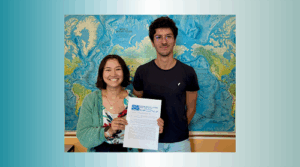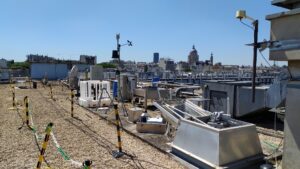Séminaire
Impact of AMV on the West African Monsoon in DCPP-C-like simulations
Elsa Mohino (Universidad Complutense de Madrid)
Séminaire du LOCEAN.
Description
West Africa hosts a monsoon during boreal summer, bringing most of its rainfall to the semi-arid region of the Sahel. During the instrumental period, the monsoon has shown strong inter-annual to multi-decadal variability. Among others sources, the Atlantic Multidecadal Variability (AMV) has modulated the West African monsoon. The AMV is a basin-scale fluctuation at multi-decadal timescales observed especially in the North Atlantic, with a pattern of inter-hemispheric anomalous SST contrast. It has been shown to impact total seasonal rainfall amounts over the Sahel. However, whether and how AMV affects the distribution of rainfall or the timing of the West African Monsoon is not well known. In this presentation we will overview the main characteristics of the West African monsoon and its modulation by the AMV, paying special attention to its impact on the distribution and timing of rainfall.
We will use a set of coordinated experiments performed by climate models in which an idealized AMV forcing is imposed in the North Atlantic through a flux adjustment. The setup follows a protocol largely consistent with the one proposed by the Component C of the Decadal Climate Prediction Project (DCPP-C). We start by evaluating model’s performance in simulating precipitation, showing that models underestimate it over the Sahel, where the mean intensity is consistently smaller than observations. Conversely, models overestimate precipitation over the Guinea Coast, where too many rainy days are simulated. In addition, most models underestimate the average length of the rainy season over the Sahel, some due to a too late monsoon onset and others due to a too early cessation.
In response to a persistent positive AMV pattern, which features a warmer-than-average North Atlantic, models show an enhancement in total summer rainfall over continental West Africa, including the Sahel. Under a positive AMV phase, the number of wet days and the intensity of daily rainfall events are also enhanced over the Sahel. The former explains most of the changes in seasonal rainfall in the northern fringe, while the latter is more relevant in the southern region, where higher rainfall anomalies occur. This dominance is connected to the changes in the number of days per type of event: the frequency of both moderate and heavy events increases over the Sahel’s northern fringe.
Conversely, over the southern limit, it is mostly the frequency of heavy events which is enhanced, affecting the mean rainfall intensity there. Extreme rainfall events are also enhanced over the whole Sahel in response to a positive phase of the AMV. Over the Sahel, models with stronger negative biases in rainfall amounts compared to observations show weaker changes in response to AMV, suggesting systematic biases could affect the simulated responses. The monsoon onset over the Sahel shows no clear response to AMV, while the demise tends to be delayed and the overall length of the monsoon season enhanced between 2 and 5 days with the positive AMV pattern. The effect of AMV on the seasonality of the monsoon is more consistent to the west of 10ºW, with all models showing a statistically significant earlier onset, later demise and enhanced monsoon season with the positive phase of the AMV.
Informations supplémentaires
Lieu
LOCEAN
Sorbonne Université, Campus Pierre et Marie Curie (Jussieu)
Couloir 45-55, 4e étage, pièce 417
En visio
https://cnrs.zoom.us/j/92911047970?pwd=SCsvSVAreFNsbDFsa3hrMDJCYllxUT09






